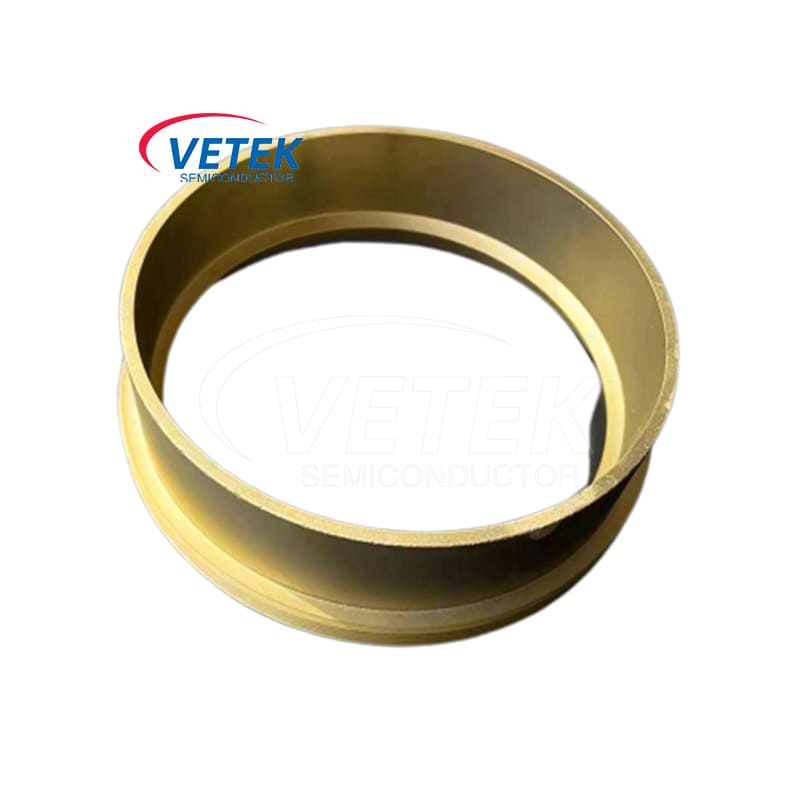How Tantalum Carbide Coatings Improve Aerospace Component Lifespan
2025-01-14
The aerospace industry operates in some of the most demanding environments on Earth. Components used in aircraft engines, turbine blades, and other critical parts are subjected to extreme temperatures, high velocities, and significant wear. As a result, the durability and longevity of these components are essential for ensuring safety, reliability, and performance. One of the most effective ways to improve the lifespan of aerospace components is by applying tantalum carbide (TaC) coatings.
Tantalum carbide is a highly wear-resistant and thermally stable material that has become increasingly valuable in aerospace applications. In this article, we’ll explore how tantalum carbide coatings enhance the lifespan of aerospace components and why they are crucial for high-performance operations.
1. Superior Wear Resistance in Harsh Environments
How does tantalum carbide improve wear resistance in aerospace components?
Tantalum carbide is known for its exceptional hardness—it ranks as one of the hardest materials, with a Mohs hardness of about 9. This makes it highly resistant to abrasive wear. Aerospace components, especially turbine blades and engine parts, are exposed to intense friction and high-velocity airflow.
Tantalum carbide coatings reduce the amount of wear these parts experience, helping to preserve the integrity of surfaces that would otherwise degrade over time. By acting as a protective barrier, the coating prevents material loss due to friction and contact with particles or other surfaces, which ultimately extends the lifespan of the components.
2. Thermal Protection for High-Temperature Components
What role does tantalum carbide play in thermal stability for aerospace parts?
Aerospace engines operate at incredibly high temperatures, particularly in turbine sections where temperatures can exceed 1,000°C (1,832°F). Such conditions can cause thermal degradation and fatigue in materials that are not adequately protected.
Tantalum carbide has an exceptionally high melting point (around 3,500°C), which makes it ideal for high-temperature applications. When applied as a coating on parts such as turbine blades, exhaust nozzles, and combustor liners, it helps prevent overheating and thermal damage. The coating acts as a thermal barrier, ensuring that the underlying material maintains its structural integrity, even under extreme heat.
3. Oxidation Resistance in Oxidizing Environments
How does tantalum carbide enhance oxidation resistance in aerospace components?
Oxidation is a significant challenge for aerospace materials, especially in high-altitude and high-speed environments. At these altitudes, oxygen and moisture can cause corrosion and oxidation, which weakens components over time. Turbine blades, for instance, are particularly susceptible to oxidation due to the high temperatures they endure.
Tantalum carbide coatings offer excellent resistance to oxidation. The material’s chemical stability prevents the formation of oxides, which means that aerospace components are less likely to corrode or lose strength in oxygen-rich environments. This oxidation resistance helps improve the longevity of key engine parts, reducing the frequency of maintenance and replacement.
4. Improved Efficiency and Reduced Maintenance
How does applying tantalum carbide coatings improve the overall efficiency of aerospace systems?
The high hardness and low friction characteristics of tantalum carbide coatings contribute to increased efficiency in aerospace systems. For example, by reducing wear on turbine blades and other moving parts, these coatings allow components to function at optimal performance levels for longer periods. This translates into:
- Lower friction in parts that experience constant motion (such as turbine blades or nozzles), which reduces the overall energy loss due to friction.
- Fewer maintenance cycles because components last longer and remain within tolerance for a greater period.
- Reduced fuel consumption as engine efficiency is improved, since less energy is wasted due to friction and wear.
This extended lifespan and enhanced efficiency directly lead to reduced operational costs and improved overall system performance.
5. Resistance to Chemical Attack and Erosion
In what ways does tantalum carbide protect aerospace components from chemical damage?
Aerospace components are often exposed to a variety of chemicals and particulate matter, such as exhaust gases, salts, and corrosive materials that can erode or degrade materials over time. For instance, components in the combustion chamber or exhaust system may be exposed to gases like sulfur and nitrogen oxides, which can cause corrosion.
Tantalum carbide coatings provide superior chemical resistance. The material is chemically inert in many harsh environments, meaning it will not react with these substances. In addition, tantalum carbide resists erosion caused by high-velocity particles, which makes it especially useful in parts like turbine blades and nozzles where erosion can lead to failure. The coating maintains the integrity of parts, ensuring that they perform well even in environments with high chemical exposure.
6. Enhanced Protection for High-Performance Turbine Blades
What is the specific impact of tantalum carbide coatings on turbine blades?
Turbine blades are critical components in jet engines, and they face some of the harshest operating conditions: extreme heat, high centrifugal forces, and exposure to corrosive gases. Tantalum carbide coatings significantly enhance the performance and lifespan of these blades by offering:
1. Wear resistance: The coating prevents the blades from wearing down due to constant interaction with the hot, pressurized gases.
2. Thermal resistance: By withstanding the high temperatures generated in the engine, the coating protects the blade material from thermal damage.
3. Fatigue resistance: The coatings also help reduce the risk of thermal cycling fatigue, a common cause of failure in turbine blades exposed to fluctuating temperatures.
As a result, the overall durability of turbine blades is improved, which directly enhances the engine’s performance, reduces downtime, and lowers the cost of maintenance and replacement.
Conclusion
Tantalum carbide coatings are revolutionizing the aerospace industry by providing enhanced durability, wear resistance, and thermal protection for critical components. Whether it's turbine blades, exhaust nozzles, or other high-performance parts, tantalum carbide helps extend the lifespan of aerospace components, improve engine efficiency, and reduce maintenance needs. Its superior hardness, oxidation resistance, and ability to withstand extreme temperatures make it an indispensable material in modern aerospace engineering.
As the aerospace industry continues to push the boundaries of technology and performance, tantalum carbide coatings will play an increasingly important role in ensuring that these high-stakes components can operate safely, efficiently, and reliably for extended periods.



